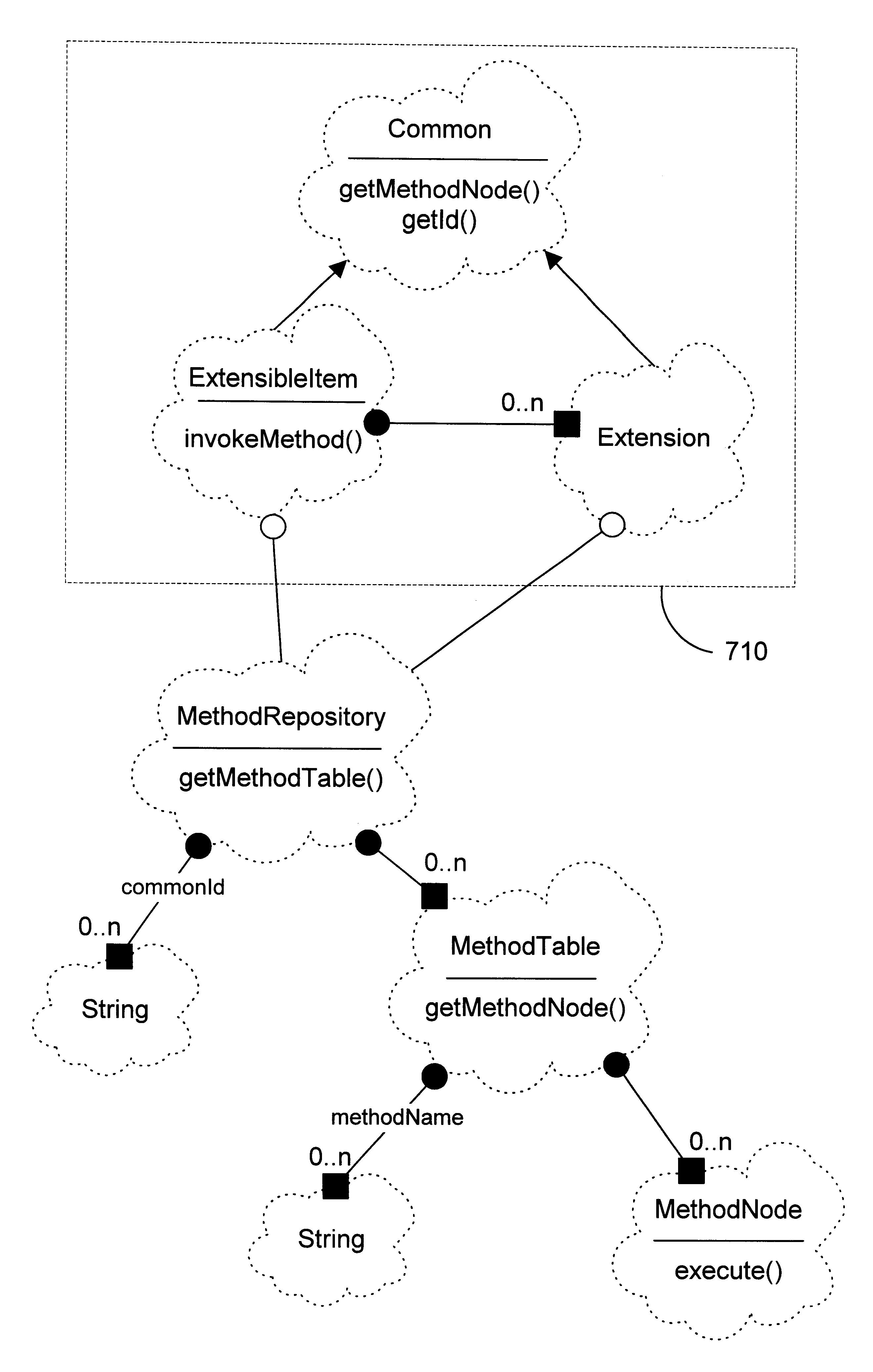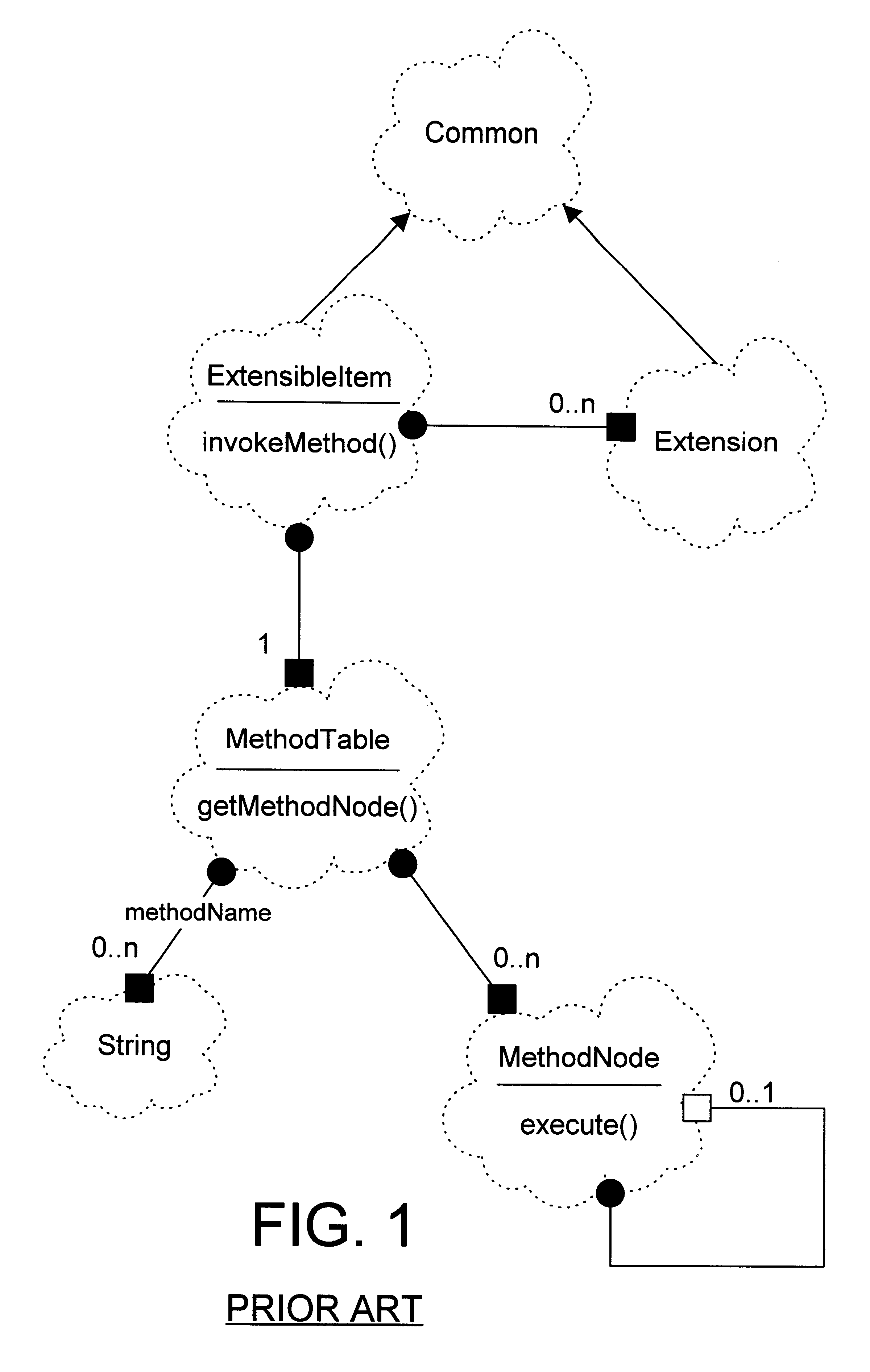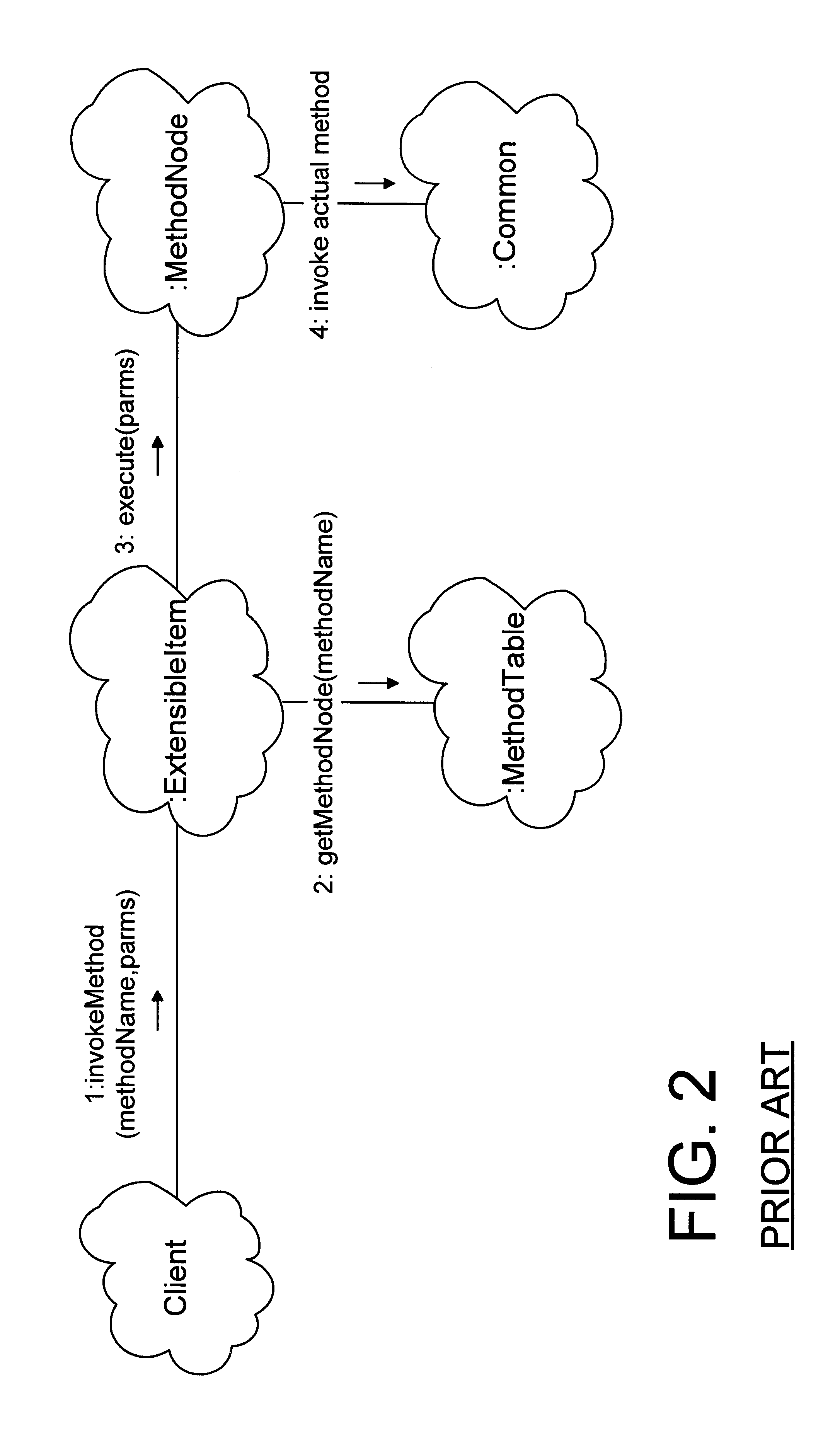Implementation for an object oriented run-time extensible item
a run-time extensible and object-oriented technology, applied in the field of object-oriented programming, can solve the problems of increasing software development costs, more money, and extremely powerful application software programs designed for high-performance computer systems
- Summary
- Abstract
- Description
- Claims
- Application Information
AI Technical Summary
Benefits of technology
Problems solved by technology
Method used
Image
Examples
Embodiment Construction
The known run-time extensible items defined by IBM's San Francisco framework version 1.2 provide a powerful way for dynamically modifying the function of an object at run-time. However, the specific implementation of the ExtensibleItem in San Francisco can create a large footprint in memory for the ExtensibleItem. Furthermore, there is significant overhead in adding and deleting extensions to an extensible item, as shown by the steps in FIG. 3. Because the addition and deletion of extensions to extensible items is a very common occurrence in the San Francisco framework, this overhead can significantly impact system performance. The present invention was developed to provide an implementation for an ExtensibleItem that is transparent to any client that uses extensible items, but that greatly improves the performance of computer programs that use ExtensibleItems when compared to the implementation in version 1.2 of the San Francisco framework.
Referring to FIG. 6, a computer system 100...
PUM
 Login to View More
Login to View More Abstract
Description
Claims
Application Information
 Login to View More
Login to View More - R&D
- Intellectual Property
- Life Sciences
- Materials
- Tech Scout
- Unparalleled Data Quality
- Higher Quality Content
- 60% Fewer Hallucinations
Browse by: Latest US Patents, China's latest patents, Technical Efficacy Thesaurus, Application Domain, Technology Topic, Popular Technical Reports.
© 2025 PatSnap. All rights reserved.Legal|Privacy policy|Modern Slavery Act Transparency Statement|Sitemap|About US| Contact US: help@patsnap.com



